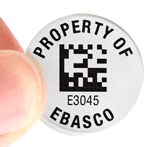Bicycle helmet history and laws
 Bicycle helmets have been around for a long time and have undergone transformations in their designs over the years. From bowling bowl shaped hats to the standardized modern lightweight helmets, these protective gears have been used widely by bikers around the world. Here’s a quick look at the birth of bicycle helmets, how they changed over time, and the present laws governing the use of bicycle helmets in the US.
Bicycle helmets have been around for a long time and have undergone transformations in their designs over the years. From bowling bowl shaped hats to the standardized modern lightweight helmets, these protective gears have been used widely by bikers around the world. Here’s a quick look at the birth of bicycle helmets, how they changed over time, and the present laws governing the use of bicycle helmets in the US.
History of Bicycle Helmets
The use of bike helmets can be dated back to the 1880s when people riding big-wheel bikes wore hardened hats. These hats were made of a cork-like material covered with cloth. For many years, ‘hair nets’ (helmets made with bulky leather straps) were a popular trend but used by professional race riders only.
During the year 1975, engineers began producing different helmet versions for bicycle riders while they were working on motorcycle helmet technology. Bicycle helmets were initially a follow-up product, introduced after the development of polystyrene foams used in motorcycle helmets. As per the National Museum of American History, the first commercially available helmet was produced by Bell Helmets Inc. The manufacturers used a hard lexan shell covering a polystyrene foam line for the new helmets, which dominated the market throughout the 1970s.
Bike helmet designs continued to change during the 1980s and the use of helmets among cyclists increased. Various reports suggesting that bike helmets could reduce the chances of head injuries along with different manufacturers claiming the effectiveness of bike helmets also helped in pushing sales.
The 1990s saw a further change in the design of bicycle helmets. Helmets were now made using thin plastic shells which, according to Randy Stwart, Director, Bicycle Helmet Safety Institute, did not offer much protection.
The helmets used today use expanded polystyrene that was used in the 1970s.
 According to the Bicycle Helmet Safety Institute, bicycle helmet laws began being adopted in 1987 to reduce the number of injuries and deaths among bike riders. California was the first state to propose a helmet law in the year 1986. However, when the law was enacted, it applied to children under 5 years of age. Later in 1994, the law was amended to include bikers under the age of 18. New York adopted a state-wide helmet law in 1989 followed by Massachusetts a year later.
According to the Bicycle Helmet Safety Institute, bicycle helmet laws began being adopted in 1987 to reduce the number of injuries and deaths among bike riders. California was the first state to propose a helmet law in the year 1986. However, when the law was enacted, it applied to children under 5 years of age. Later in 1994, the law was amended to include bikers under the age of 18. New York adopted a state-wide helmet law in 1989 followed by Massachusetts a year later.
Bicycle Helmet Law
As of now, there is no universal law requiring people to wear bicycle helmets in the US. The laws differ in every state, and in some cases, different jurisdictions within a state. Only District of Columbia, Virgin Islands and the Northern Mariana Islands along with 21 other states in the US have state-wide bicycle helmet laws, applicable to young riders often under the age of 16.
Find state-wise bicycle helmet laws here.
Fines For Not Wearing a Bicycle Helmet
The fines for noncompliance differ in different jurisdictions. In New York and California, for example, the first violation is written off if the person provides a proof of purchase of a helmet that meets the standards. Upon subsequent violations, the person is charged with a fine of not more than $50 and $20 respectively. Bikers in other areas can be charged between $25-$50 for the first offense and $100 for any subsequent offenses.
Fines for not wearing a helmet in some other states is given below-
- In Florida, the fine for not wearing a helmet is $35 while in Seattle it is $103.
- In Arizona, the law specifies a fine between $25 and $75.
- People who violate the bike helmet law in Pennsylvania are not charged with any fine if they buy a helmet. For those, who don’t buy one have to pay a fine of $25.
- Bike helmet law is New Jersey cites a fine of not more than $25 charged to a parent or legal guardian for the first offense. Subsequent offenses are subject to a $100 fine if parental supervision contributed to the violation.
- The helmet law in Texas applies to children under the age of 18. The person has to pay a fine of $20 for the first offense and $40 for subsequent offenses. The first offense is pardoned if the proof of purchase of helmet is provided within the first 30 days of the offense.
Category: Uncategorized











